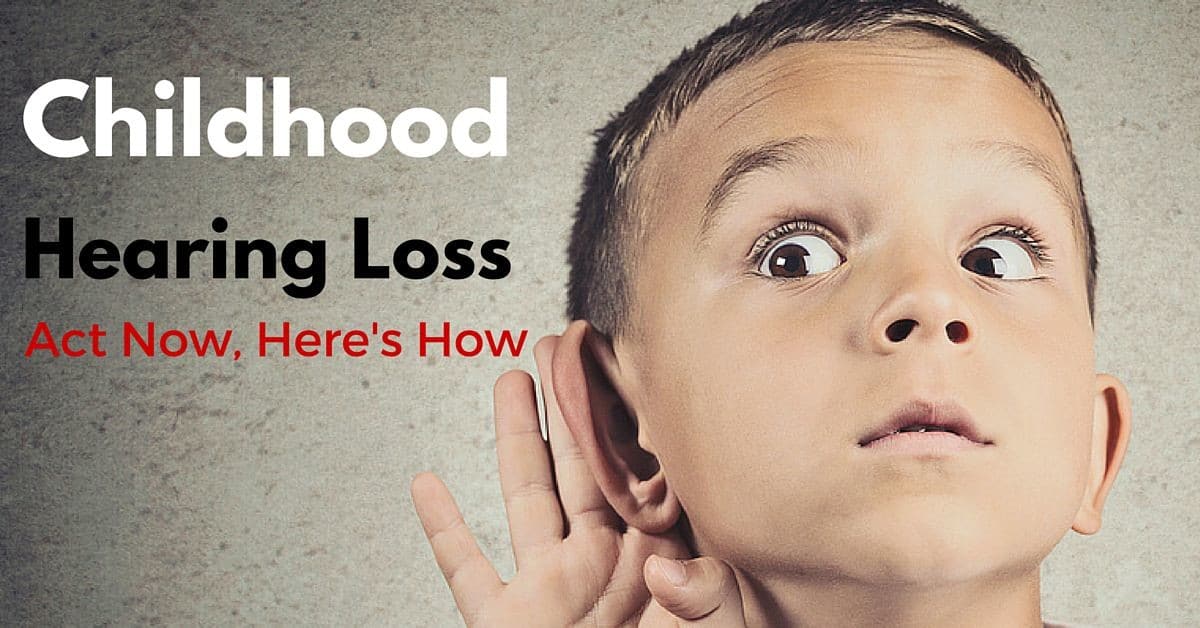A Brief Synopsis of the World Health Organization’s Recent Publication on Childhood Hearing Loss
There are approximately 32 million children living with disabling hearing loss worldwide. Did you know that of those cases, an estimated 60% are the effect of preventable causes? In their 2016 publication about childhood hearing loss, the World Health Organization (WHO) provided vital guidelines for preventative actions against childhood hearing loss. We at My Hearing Centers have taken the most pertinent information to give you an easily digestible take-away.
Impact of Childhood Hearing Loss
Childhood hearing loss most profoundly effects language acquisition. Untreated hearing problems also cause academic underachievement, problems with socializing and issues with self-esteem. These problems in childhood can lead to fewer opportunities in adulthood, including less earning potential. Although interventions do profoundly mitigate these damages, children in lower-resource countries or communities are less likely to have access to them, thus reinforcing the focus on of taking preventative action.
Causes of Hearing Loss
Of the 60% of preventable causes, 31% are caused by diseases such as measles, mumps, and ear infections. 17% of preventable causes are the result of birth-related complications such as prematurity and asphyxia. Ototoxic medicine use in pregnant mothers and infants cause 4% of childhood hearing loss cases.
Importance of Early Identification
Early identification is imperative to improving the lives of children with hearing loss. Studies have shown that children with hearing loss who received intervention within the first 6-months of life, were actually on par linguistically with their non-hearing-impaired peers by age five.
Strategies for Prevention and Care
Strengthen
WHO urges governments and other agencies to strengthen immunization programs, maternal and child health programs, and support groups for people with hearing loss. Immunizations of rubella and meningitis alone could eliminate over 19% of childhood hearing loss. When mothers and children are being immunized for these diseases, and pregnant women and babies receive higher caliber health care, complications that cause hearing loss, such as low birth weight, prematurity, and asphyxia will be reduced.
Implement
Implement newborn hearing screen policies and family-centered intervention plans to habilitate children with early onset hearing loss.
Train
Train primary care physicians, nurses, and health practitioners about the relevance of ear diseases, the preventable causes of hearing loss in children, the preventative measures available, the importance of early detection, and the interventions available.
Make Accessible
Even when hearing loss is detected early, many families do not have access to interventions due to availability and cost. Governments need to ensure access to interventions necessary to facilitate communication for children with hearing loss.
Regulate and Monitor
Develop and implement regulations regarding the use of ototoxic medicines. When absolutely necessary, agencies should mandate proper audiological monitoring to detect any hearing loss from the medications.
While it may seem staggering that 60% of hearing loss in children is preventable, it is actually quite uplifting. There are measures we can all take, on both an individual and collective level to help reduce the number of children living with hearing loss.
For more information or to read the World Health Organization’s entire publication please click here: http://sac-oac.ca/news-events/news/who-outlines-ways-prevent-and-mitigate-childhood-hearing-loss-world-health
Live your life to the fullest! Call (877) 330-2920 to schedule an appointment at one of our locations today!


